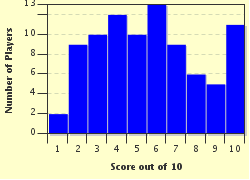Quiz Answer Key and Fun Facts
1. Goulash (Gulyás) is probably Hungary's best-known dish. The Hungarian word has another meaning as well. What else does Gulyás mean?
2. Sour cherry soup (Hideg Heggyleves) can be an appetizer, a soup course or a dessert. Besides eating too much of it, what else should you watch out for when enjoying authentic Hideg Heggyleves?
3. Puszta Schnitzel? Schnitzel is German, but this is a Magyar dish. What makes Puszta Schnitzel different from that stuff they cook in Vienna, you know, Wiener Schnitzel?
4. King Louis XIV of France called Tokay (Tokaj) "the wine of kings and the king of wines." When the wine steward brings your bottle, you notice a prominent single-digit number on the label. What does it indicate?
5. Hungary produces a robust red wine with a strange name and a violent history. What's it called?
6. Chicken paprikas (Paprikás Csirke) is made with chicken and bell peppers - and the spice paprika of course. What's another main ingredient in this celebrated dish?
7. Pörkölt is very popular in Hungary. The word also means "roasted." Why is that a strange name?
8. Stefania meatloaf (Stefánia Szelet) looks ordinary from the outside ... but wait, what's that in the middle of my slice?
9. Some say that true Hungarian Rétes is far superior to mere Strudel. Wherever you stand on that question, what type of flour would you use to make this traditional dessert?
10. Dobos Torta (it's the same in English) was invented by Hungarian confectioner József Dobos in 1885. It stays moist for a longer time than many cakes and torts. Why?
Source: Author
ignotus999
This quiz was reviewed by FunTrivia editor
WesleyCrusher before going online.
Any errors found in FunTrivia content are routinely corrected through our feedback system.


